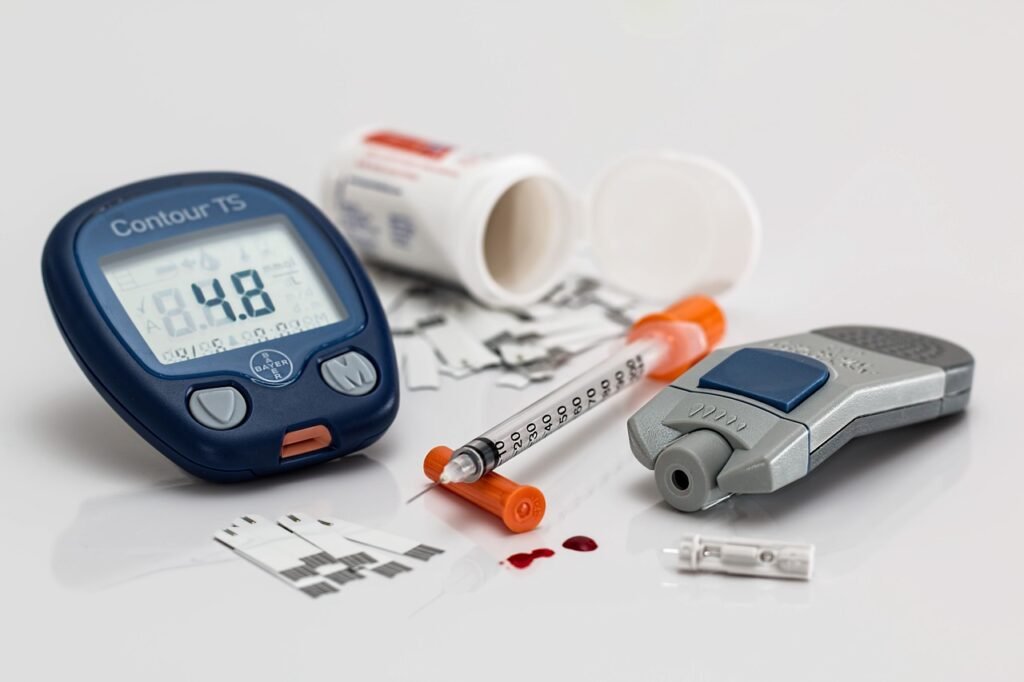Explore the obesity diabetes symptoms in this comprehensive guide. Learn to recognize early signs, distinguish between type 1 and type 2 diabetes, and understand the crucial role of continuous glucose monitoring, diabetic diets, and blood sugar monitors. Arm yourself with knowledge to identify and manage obesity-related diabetes symptoms effectively.
Table of Contents:
- Introduction
- Identifying Diabetes Symptoms: An Early Warning
- Deciphering Type 1 and Type 2 Diabetes
- Obesity’s Impact on Diabetes Symptoms
- Continuous Glucose Monitoring: A Technological Ally
- The Significance of a Diabetic Diet
- Blood Sugar Monitors: Key Players in Diabetes Management
- Lifestyle Changes for Symptom Control
- Frequently Asked Questions
- Conclusion
Navigating the Telltale Signs: Unraveling Obesity-Related Diabetes Symptoms

Embark on a journey to understand the intricate connection between obesity and diabetes symptoms. This guide aims to shed light on recognizing early signs, differentiating between type 1 and type 2 diabetes, and leveraging tools like continuous glucose monitoring, diabetic diets, and blood sugar monitors for effective management.
Identifying Diabetes Symptoms: An Early Warning
- Increased Thirst: Excessive thirst is often an early symptom of diabetes.
- Frequent Urination: Diabetes frequently presents with increased urination.
- Unexplained Weight Loss: Sudden weight loss without a clear cause may signal the need for diabetes screening.
- Fatigue: Persistent fatigue can be an early indicator of diabetes, underscoring the importance of recognizing these symptoms promptly.
Early recognition of these symptoms is key for proactive diabetes management.
Deciphering Type 1 and Type 2 Diabetes
- Type 1 Diabetes:
- Autoimmune condition.
- Typically diagnosed in childhood.
- Requires insulin injections for survival.
- Type 2 Diabetes:
- Linked to lifestyle factors.
- Commonly diagnosed in adulthood.
- May involve lifestyle modifications, oral medications, and insulin therapy in some cases.
Understanding the distinctions between type 1 and type 2 diabetes is crucial in identifying obesity-related diabetes symptoms.
Obesity’s Impact on Diabetes Symptoms
- Insulin Resistance: Obesity is a significant contributor to insulin resistance, leading to elevated blood sugar levels.
- Increased Fat Tissue: Excess fat, especially around the abdomen, is linked to insulin resistance and type 2 diabetes.
- Inflammatory Response: Obesity triggers chronic inflammation, exacerbating diabetes symptoms.
Examining how obesity impacts diabetes symptoms reveals the complex interplay between these two health factors.
Continuous Glucose Monitoring: A Technological Ally
- Real-time Data: Continuous Glucose Monitoring (CGM) provides real-time information on blood sugar levels.
- Immediate Adjustments: CGM enables individuals to make immediate lifestyle adjustments based on current glucose levels.
- Proactive Management: Incorporating CGM allows for proactive diabetes management, especially in the context of obesity-related symptoms.
Continuous glucose monitoring serves as a technological ally in identifying and managing diabetes symptoms.
The Significance of a Diabetic Diet
- Balanced Nutrition: A diabetic-friendly diet emphasizes whole grains, lean proteins, fruits, and vegetables.
- Carbohydrate Management: Monitoring and managing carbohydrate intake is crucial for stable blood sugar levels.
- Weight Management: A diabetic diet contributes to weight management, addressing a key aspect of obesity-related diabetes symptoms.
A diabetic-friendly diet plays a pivotal role in managing both obesity and diabetes symptoms.
Blood Sugar Monitors: Key Players in Diabetes Management
- Accuracy: Selecting a blood sugar monitor with high accuracy is essential for reliable readings.
- Ease of Use: User-friendly features make monitoring accessible and convenient for individuals with diabetes.
- Portability: Compact and portable monitors facilitate on-the-go testing, ensuring continuous monitoring.
Choosing an appropriate blood sugar monitor is a crucial step in identifying and managing obesity-related diabetes symptoms.
Lifestyle Changes for Symptom Control
- Regular Exercise: Incorporating physical activity into daily routines helps maintain overall health.
- Aerobic Exercises: Engage in activities like walking, jogging, or swimming for cardiovascular health.
- Strength Training: Building muscle mass contributes to improved insulin sensitivity.
Making lifestyle changes is essential for controlling and managing obesity-related diabetes symptoms.
Frequently Asked Questions Besides Obesity Diabetes Symptoms
Q1: Can obesity cause type 1 diabetes? A1: No, type 1 diabetes is primarily an autoimmune condition, while obesity is a significant risk factor for type 2 diabetes.
Q2: How does continuous glucose monitoring differ from traditional monitoring methods? A2: Continuous Glucose Monitoring (CGM) provides real-time data throughout the day, offering a more comprehensive and proactive approach compared to traditional methods.
Q3: Is fatigue always a symptom of diabetes? A3: While fatigue can be a symptom, it is not exclusive to diabetes and may have various causes. It is crucial to consult with a healthcare professional for accurate diagnosis.
Conclusion
In conclusion, identifying and managing obesity-related diabetes symptoms involves understanding early signs, differentiating between diabetes types, and leveraging tools like continuous glucose monitoring, diabetic diets, and blood sugar monitors. This comprehensive guide serves as a valuable resource for those navigating the complex relationship between obesity and diabetes symptoms, providing insights for proactive health management and a roadmap to a healthier lifestyle.



